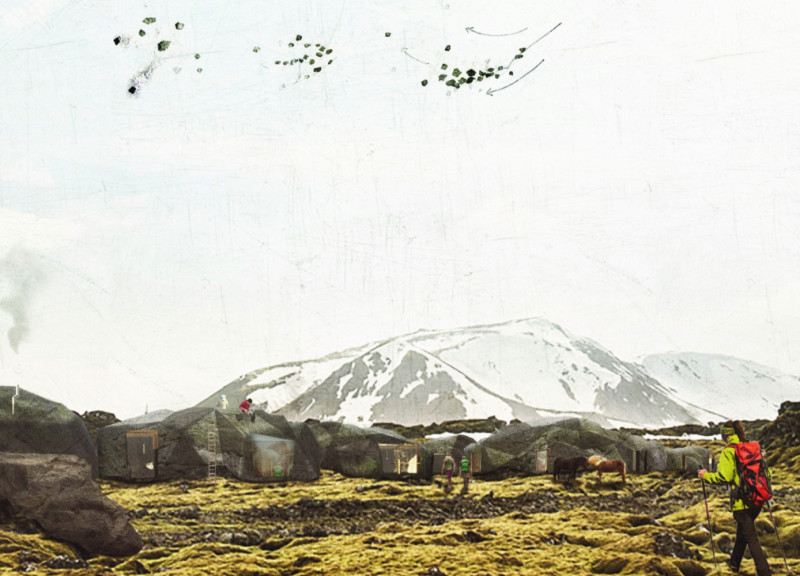5 key facts about this project
The Aurora Castles project is located in Iceland, around the beautiful Mývatn Lake. This area is known for its volcanic landscapes and glaciers. The project aims to connect the built environment with the surrounding nature. It draws inspiration from the unique geological features found in the region, emphasizing shapes and textures that reflect volcanic activity and glacial formations. The design includes guest houses that serve both functional and aesthetic purposes, providing visitors with a connection to the striking landscape.
Geometric Integration
The guest houses feature geometric forms that engage with the distinct land features of the area. Their faceted and textured designs echo the look of nearby lava fields and rock formations. Each structure conveys a sense of permanence and stability, standing prominently against the backdrop of the natural world. This design creates an outgoing presence that contrasts with the more enclosed and reserved nature of nearby Dimmuborgir.
Concept of Occupied Erratics
Occupied erratics play an important role in the design, serving as abstract representations of glacial boulders found in the landscape. These forms enhance the visual quality of the site and allow guest rooms to be positioned according to weather conditions. This flexibility encourages exploration and interaction, inviting visitors to experience the natural surroundings and fostering a deeper connection to the landscape.
Spatial Organization
The interior layout of the guest houses has been carefully organized to offer various experiences. Spaces transition smoothly from more private areas to communal ones, promoting social interaction among guests. Function-driven areas, such as the bathhouse and sauna, provide soothing environments, while reception and dining spaces are designed to be welcoming and warm. This thoughtful arrangement reflects an understanding of how people experience and enjoy the architectural space.
Sustainability Features
Incorporating sustainability into the design is key, highlighted by features such as rainwater harvesting and solar energy production. These aspects work to minimize environmental impact while maximizing efficiency. The project's approach to sustainability reinforces the goal of integrating the architecture with the natural landscape, creating a balanced relationship between the two.
The project reflects a careful consideration of the geological context, allowing the architecture to align with the natural surroundings. Each guest house stands as a representation of Icelandic nature’s enduring qualities. The overall design enhances the relationship between human-made structures and the natural beauty of the environment.


























